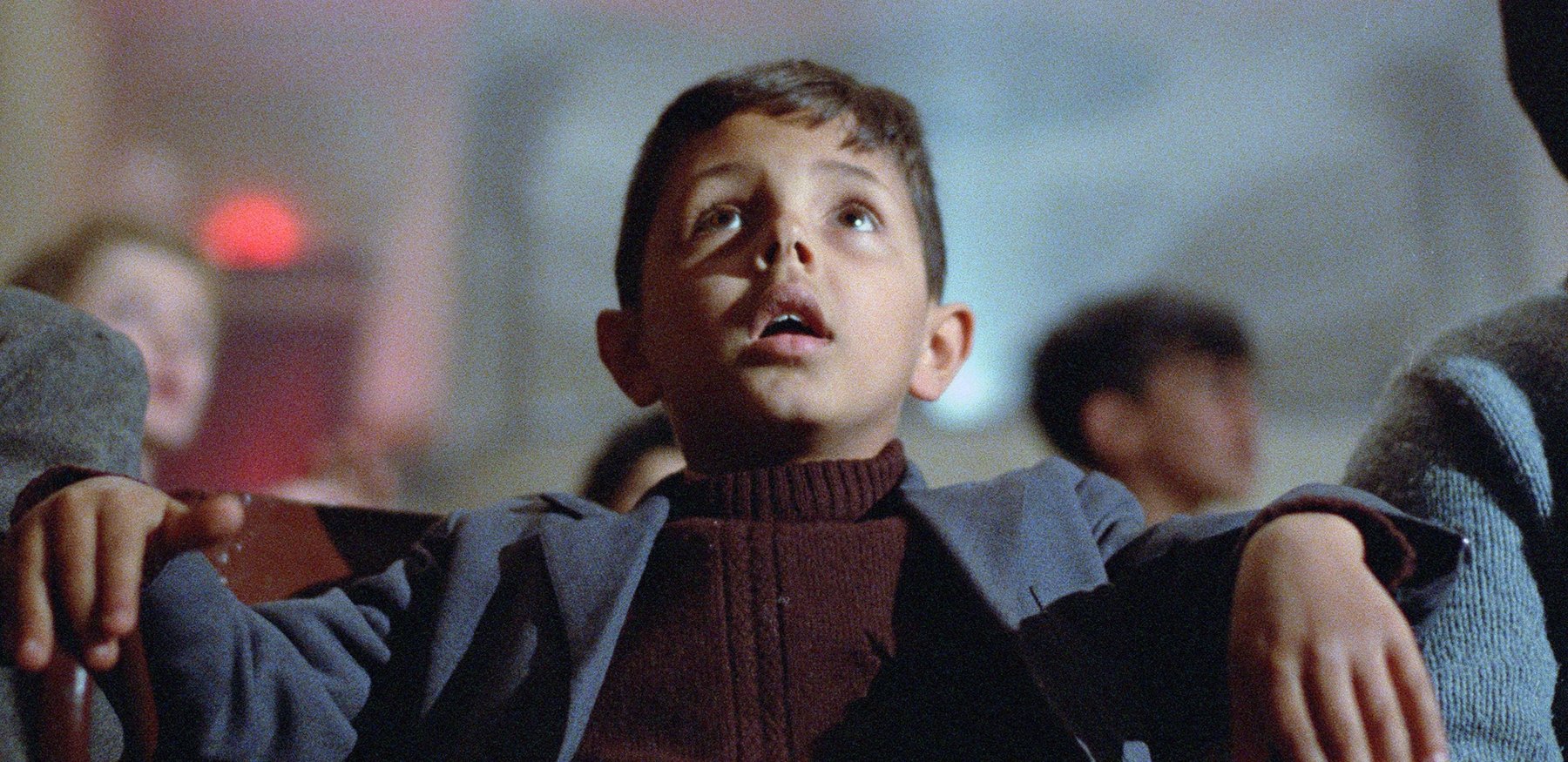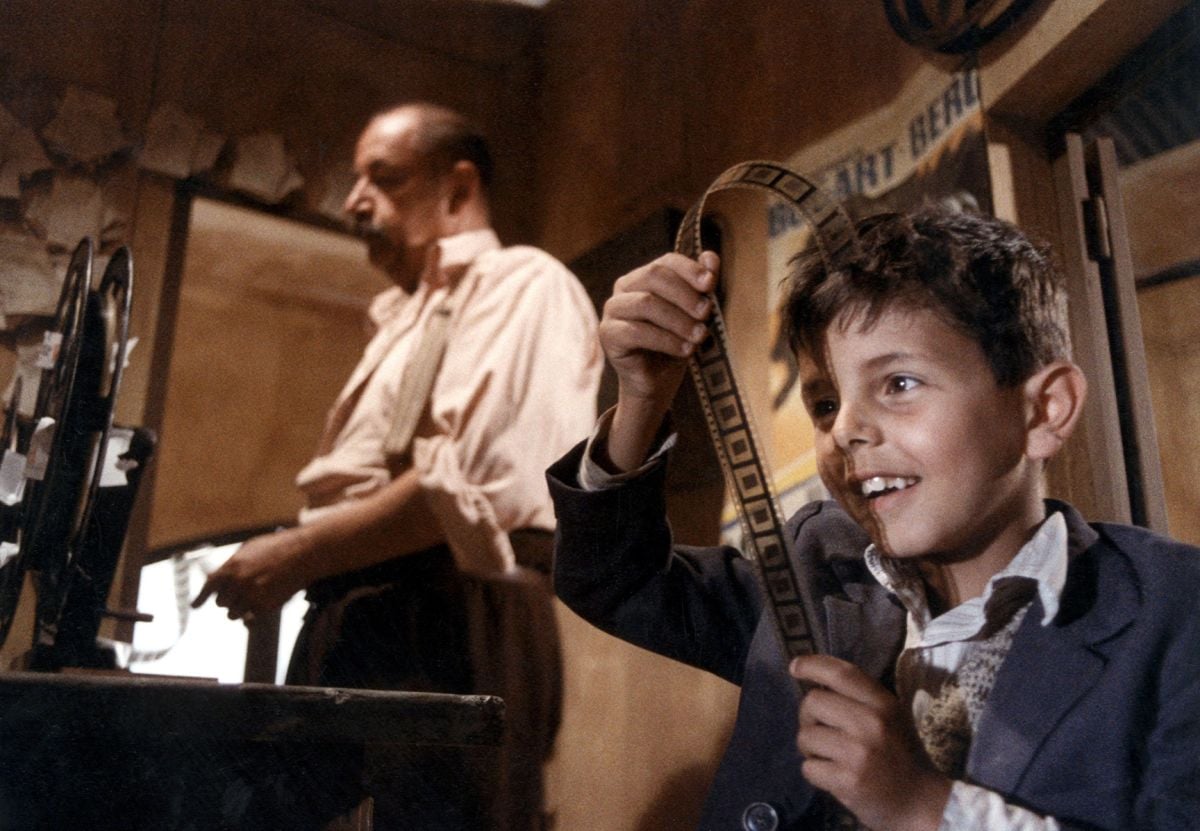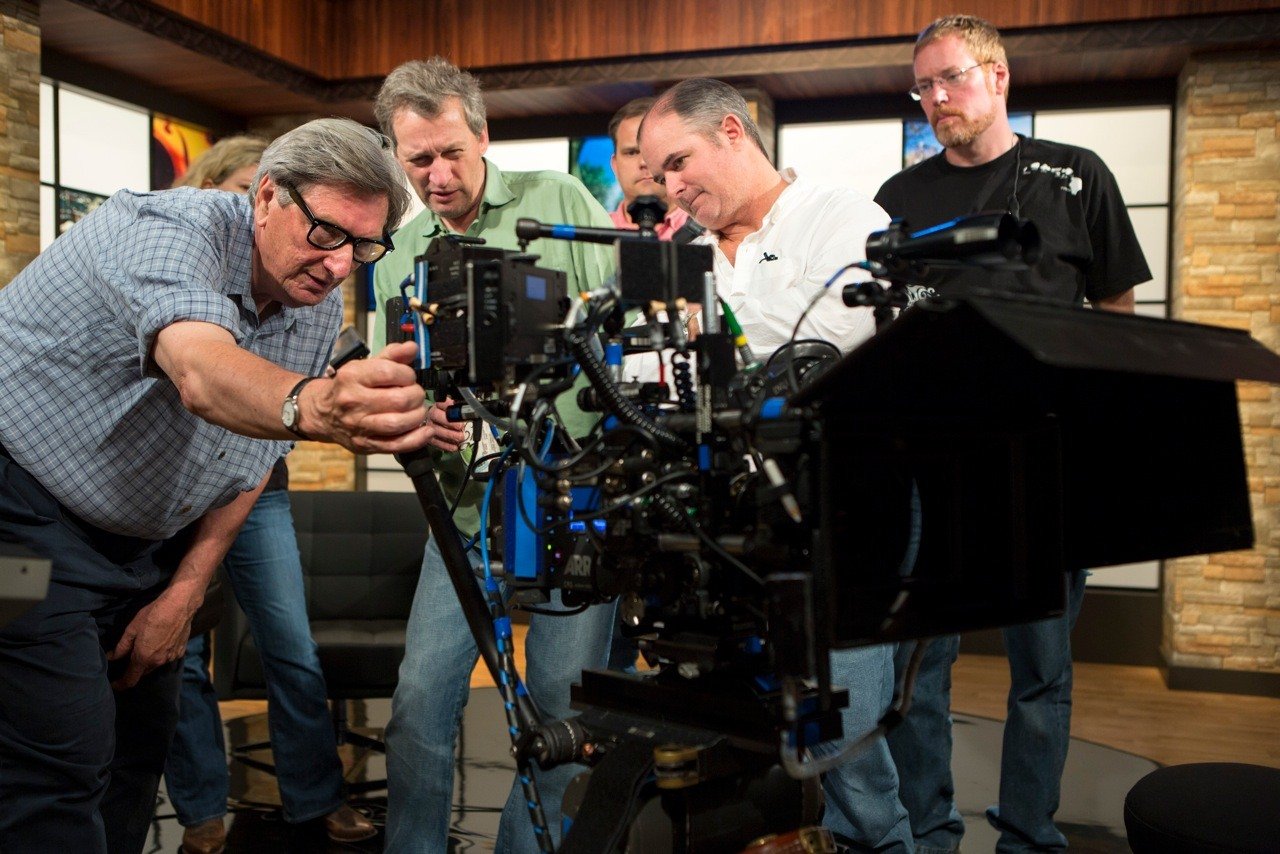
Cinema Paradiso and the Seventh Art
When audiences return to the cinema, we will be there for and with them.

There is no movie that more deeply speaks to that almost spiritual journey any aspiring filmmaker makes from intern to master than Giuseppe Tornatore’s 1988 Academy Award-winning love song to the movies, Cinema Paradiso.
The movie, shot by Blasco Giurato, begins with acclaimed filmmaker Salvatore Di Vita learning of the death of the man who had first inspired him to follow his dream: Alfredo, the movie projectionist in the Sicilian village where Salvatore — nicknamed “Totò” in his youth — first succumbed to the magical thrall of the movies. Cinema Paradiso, embracing the time-honored trope of the flashback, takes us back to the late 1940s, a time before television, when the village church and movie house were both, in their own ways, places of community-wide worship.
An early scene opens with a wan shaft of sunlight falling through a window of the village’s small Catholic church. It pools around 8-year-old Totò, who has fallen asleep while performing his duties as an altar boy. Father Adelfio has just elevated the sacred host at the most dramatic moment of the Mass, and the venerable priest is not happy with his distracted charge’s late ringing of the Sanctus bell.
Later that day, the priest sits alone in the darkened local cinema, holding aloft the same Sanctus bell; he is staring ahead as the projector casts a different beam of light on the tattered screen. (We can almost smell incense here, too.) Inside the cramped projection booth, the aging 35mm projector is manned by the grizzled Alfredo. The images pouring out of the projection port, a plaster leonine cast, are from Jean Renoir’s 1936 classic The Lower Depths. At every kiss or intimate sexual moment between actors Jean Gabin and Junie Astor, Father Adelfio rings the Sanctus bell, signaling Alfredo to insert a piece of paper into the spooling film reel — to excise frames depicting physical intimacy — before showing the movie to the local townspeople. It is a “final cut” beyond any director’s ken.
Behind a curtain in the theater entryway, Totò also stares at the screen. Slightly buck-toothed and open-mouthed, he is transfixed by the flickering images, a celluloid prelude to the adventures of adulthood soon to unspool in his own life. It is the future filmmaker’s transcendent look that speaks to all of us who have followed the same path as this modest boy into our own magical world of cinema.
Whether you are 8-year-old Totò from a backwater Sicilian village, or from an elite Upper East Side cineaste family that refers to the movies as critic Ricciotto Canudo’s “Seventh Art,” or a veiled Iranian woman embracing film not only as art but also as an agent of social change, or a recently rediscovered woman pioneer of silent cinema, you are, like the rest of us, mesmerized by this art form in constant technical and aesthetic flux. The full breadth of human emotions that the movies document continues to surprise and engage audiences — as well as us filmmakers. We, the cinema’s sleight-of-hand artists, savvy to the tricks, are every bit in thrall to its magic.
“We are not the film audience, watching a movie for a few hours and then moving on with our real lives. We live reel lives, a species of happy, lost souls cached inside our own realities. ‘The movies’ are and always will
be our lives.”

Every generation of filmmakers since the Lumière brothers, who mounted cinema’s first public exhibition in Paris in December 1895, has confronted change and challenges. Some of these have broadened the creative spectrum of how we make movies; others have been technical; and still more have been changes beyond filmmakers’ control, whether it be the commercial ups and downs of an art form deeply dependent on box-office returns, or transformative changes such as television in the 1950s, home video in the 1970s, digital production in the 2000s, or — something no one could have predicted — a deadly virus.
As I write this, many months after movie theaters across the United States shut down, filmmakers and studios are struggling to make movies within the safety guidelines dictated by Covid-19, and the future remains uncertain. Several times a week, I drive past the Vista Theatre on Sunset Boulevard in Los Feliz. It opened on Oct. 9, 1923, with a feature titled Tips, starring Baby Peggy. Its marquee now features not a current-release title, but the words “To be continued…” In a kind of irony, the marquee stands about a football field’s distance from the site where D.W. Griffith built the Babylon set for his epic 1916 film Intolerance.
Each major change during cinema’s evolution seems to augur a generational change in the men and women who make movies, and Covid-19 is no exception. This time, it is those most vulnerable to the virus — those more advanced in years — who may stand aside, becoming filmgoers once again, rather than makers. This opens portals for new and younger filmmakers.
The waters they must navigate as emerging artists are uncertain. The gnawing question of “What is a film?” — which preoccupied the Academy of Motion Picture Arts and Sciences during the two years I was its president — is still on the table, as theatrical exhibition struggles to contend with ever-expanding streaming platforms and 4K home screens. Will audiences’ desire to laugh or cry together in the dark with hundreds of fellow viewers return, or will the 100" monitor in the living room become the new normal? How we will make our future movies is in the balance.
Writing several months ago about this crossroads, I had a somewhat dystopian view of cinema’s future, but during a recent virtual meeting of the National Film Preservation Board, where I joined several dozen film scholars, historians and archivists (and a few other actual filmmakers), my belief in the timeless magic of cinema was reaffirmed. As a student, I watched key movies of the cinema canon in mostly degraded, duped and pirated prints featuring insistent scratches, missing frames and near-incoherent sound. Using today’s cutting-edge remastering technology, many films, even those from the early silent era, have been restored to the luminosity of their original release. Decades of cinematic time have collapsed; we now can see glorious restorations of movies by the Lumières. The words “film history” have become irrelevant as we almost seamlessly move from today’s VFX-laden action film to a dark masterpiece of the Expressionist era like Paul Wegener’s 1920 film The Golem. We were all gobsmacked by director Peter Jackson’s 2018 documentary They Shall Not Grow Old, which brought World War I newsreel footage back to life with state-of-the-art technology; its images can stand side by side with Roger Deakins, ASC, BSC’s brilliant work in 1917. Today, past and present cinema intersect, overlapping in wondrous ways.
“Cinema is a celebration, a secular exaltation of the aspirations of our most passionate, even spiritual, humanity.”
Near the end of Cinema Paradiso, which was made a decade before the emergence of digital cinema, the graying Salvatore returns to his childhood village after a 30-year absence to attend Alfredo’s funeral. We learn that 10-year-old Totò had replaced Alfredo as the village’s film projectionist after the older man was blinded by a nitrate-print fire in the projection booth. Becoming custodian of the village’s cinema fantasies was Totò’s first step into the intoxicating world of cinema creation. Especially in the analog film era, the role of the projectionist, that solitary worker in an often hot and oily-smelling booth, was the final link in the making of a movie.
These scenes resonate deeply for me. As a graduate student at USC School of Cinema, I received a teaching-assistant grant to work as a projectionist. My job was to present “cuts” of student works-in-progress; 16mm prints on loan from MoMA, New Yorker Films, Raymond Rohauer and Janus Films; and pristine, 35mm release prints for industry guests prior to general release. Spooling up and threading the 2,000' steel reels and nursing the ancient, dual 35mm Simplex projectors was my entry into filmmaking. Memories of those mesmerizing hours spent gawking at movies through the booth’s glass portal remain strong — a formative experience that can’t be duplicated by the automated digital-projection systems in today’s multiplexes.
As Salvatore walks the streets of Giancaldo in Alfredo’s funeral cortège, he passes the shuttered, derelict theater in the village square. It is scheduled for demolition to make way for a parking lot. The theater’s aging owner leans in to Salvatore and says grimly, “The cinema has become a memory.” Later, the townspeople gather to watch the Cinema Paradiso flattened by an implosion.
Earlier in the movie, sitting on a low wall overlooking the Mediterranean, Alfredo had offered advice to young Totò: “Life is not what you see in films; life is much harder.” Maybe so! But to those of us who have made lives of making films, and to those who are just beginning such lives, this caveat must fall on deaf ears. We are not the film audience, watching a movie for a few hours and then moving on with our real lives. We live reel lives, a species of happy, lost souls cached inside our own realities. “The movies” are and always will be our lives.
So, a pox on the dystopian vision of cinema’s future. Recent statements — even commitments — by many movie-studio executives have reaffirmed their dedication to broad-based theatrical exhibition as an essential element of movie releases. Audiences have flocked to cinema screens for 125 years, a habit the studios and exhibitors believe will again flourish as the doors open and the smell of hot popcorn welcomes us. Our mission is to be there for and with them, even as several studios equivocate on just how they will balance theatrical release with their burgeoning streaming platforms.
Several delightful scenes in Cinema Paradiso show the audience sharing vibrant emotions during a movie and eagerly waiting for lights to dim before the next show. This ritual of entering a communal space and surrendering to this shared experience in a darkened room, immersed in the flow of images and the sounds of other lives being lived, with no pause button to reach for, is, as Hamlet invokes in a darker context, “a consummation devoutly to be wished.”
It is no accident that we first see Totò as an acolyte in the rite of the celebration of the Mass. In its rich past, in its ever-vibrant present, and in its often wobbly future, cinema is a celebration, a secular exaltation of the aspirations of our most passionate, even spiritual, humanity.

John Bailey, ASC (far left in the photo above) and crew set up a shot for the feature A Walk in the Woods (2015). He was honored with the ASC Lifetime Achievement Award in 2015. He subsequently served two terms as president of the Academy of Motion Picture Arts and Sciences (2017-’19) before returning to cinematography. You can learn much more about his career here.






